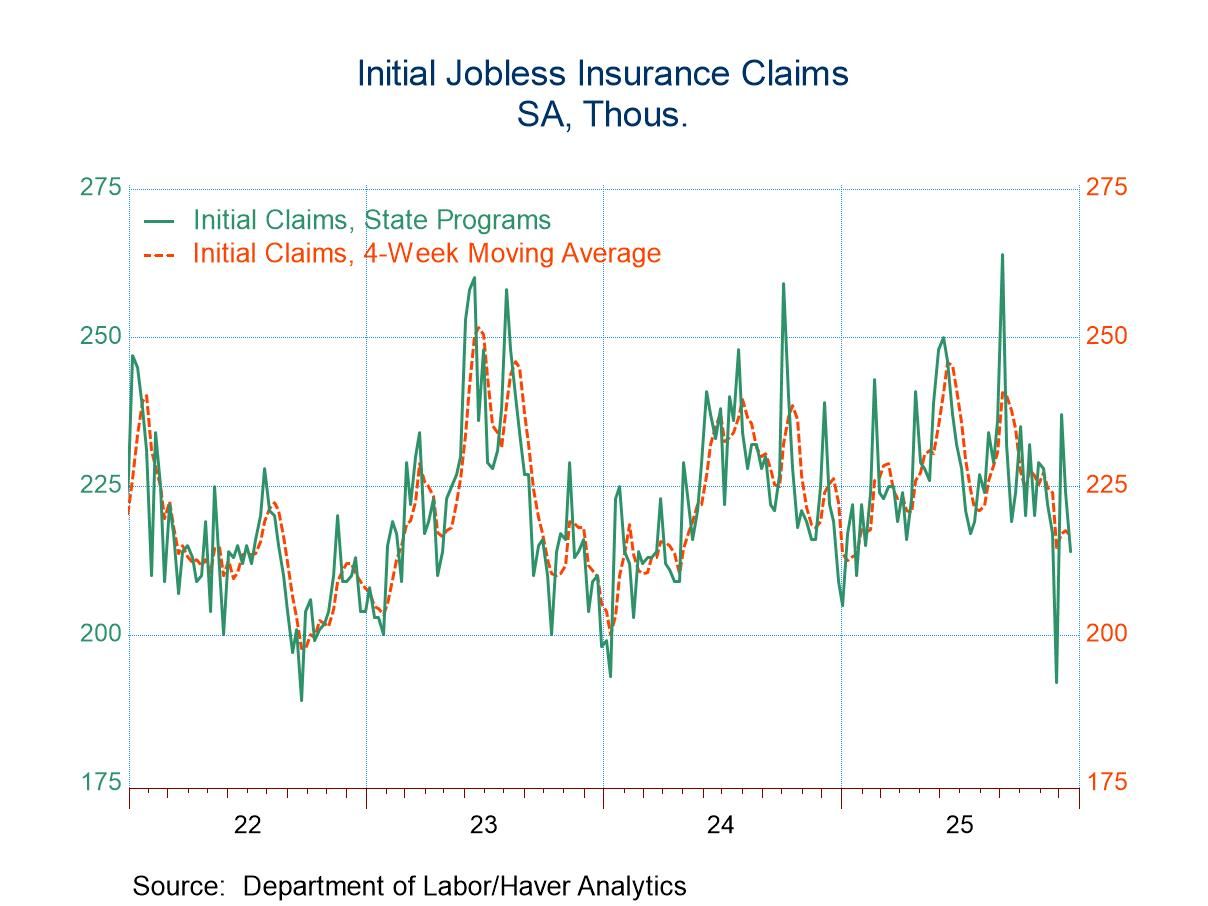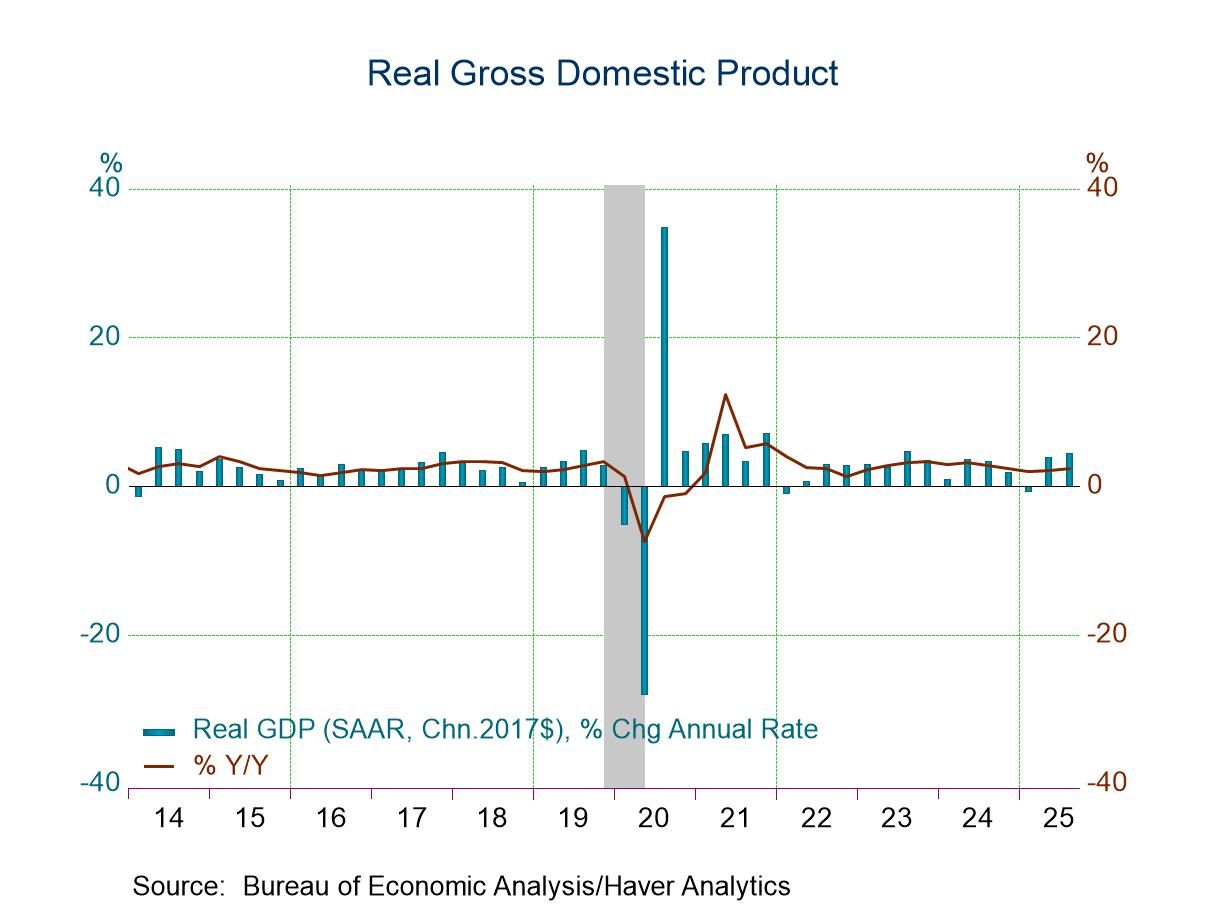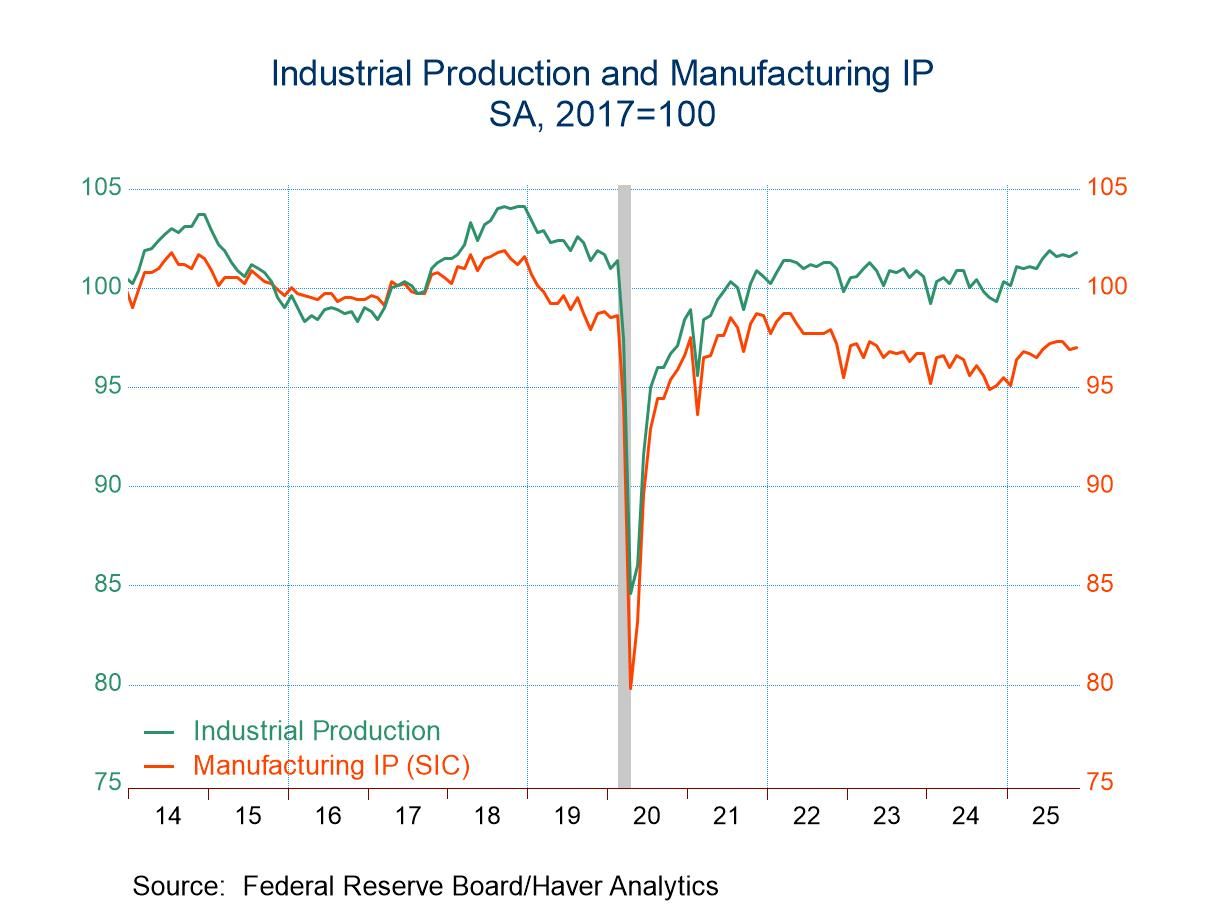 Global| Jun 25 2014
Global| Jun 25 2014U.S. GDP Shortfall Revised to 2.9% in Q1; Largest Decline Since the Recession
by:Tom Moeller
|in:Economy in Brief
Summary
Real GDP was revised to a 2.9% annual rate of decline in Q1 (+1.5% y/y) following a 1.0% drop reported last month. It was the largest decline in five years and compared to a 1.8% drop in the Action Economics Forecast Survey. Consumer [...]
Real GDP was revised to a 2.9% annual rate of decline in Q1 (+1.5% y/y) following a 1.0% drop reported last month. It was the largest decline in five years and compared to a 1.8% drop in the Action Economics Forecast Survey. Consumer spending growth was revised sharply lower while foreign trade subtracted more than previously estimated. The 1.3% rise (1.4% y/y) in the chain-type price index was unrevised.
Growth in personal consumption expenditures was reduced sharply to 1.0% (2.0% y/y) from 3.1% estimated last month. The source of the revision was medical care outlays which now show a 1.4% decline (+2.6% y/y), previously estimated at +9.1%. This lessened overall services growth to 1.5% (1.7% y/y) from 4.3%. Growth in durable goods outlays was revised to 1.2% (4.5% y/y) from 1.4% and nondurable goods outlays now show a 0.3% decline (+1.8% y/y) instead of the 0.4% increase estimated last month.
Elsewhere, final demand growth rates were little-changed. Business investment growth was revised to a negative 1.2% (+3.5% y/y) from -1.6%. Equipment spending declined at a 2.8% rate (+2.8% y/y), instead of at a 3.1% rate, and structures spending fell 7.7% (+4.9% y/y), not 7.5%. Residential investment now shows a 4.2% decline (+2.7% y/y), not a 5.0% shortfall. Government spending was unchanged showing a 0.8% rate of decline (-1.5% y/y). National defense declined at a 2.5% rate (-4.7% y/y). Spending by state & local governments fell at a 1.7% rate (+0.1% y/y).
Foreign trade subtracted 1.5 percentage points from GDP growth, revised from a 1.0 point subtraction reported last month. Exports fell at an 8.9% rate (+2.8% y/y), revised from -6.0%, and imports rose at a 1.8% rate (3.1% y/y), not 0.7%. Inventories reduced GDP growth by a little-changed 1.7 percentage points.
The total GDP chain price index rose at a 1.3% pace (1.4% y/y), the same as before, and the total PCE price index was up at a 1.4% pace (1.4% y/y). The PCE price index less food and energy was up 1.2% (1.1% y/y) and the business investment price index rose 1.1% (1.2% y/y).
Pretax profits without IVA and CCA rose an upwardly-revised 1.3% q/q (7.9% y/y) following three consecutive quarters of 2.1% gain. After-tax profits ticked 0.1% higher q/q (6.8% y/y), the weakest result in a year. With IVA & CCA, before-tax profits fell 9.1% q/q (-2.2% y/y) as earnings of nonfinancial corporations fell 8.0% q/q (-2.7% y/y. Financial sector profits fell 15.1% q/q (-7.2% y/y) and foreign sector earnings fell 5.8% q/q (+4.6% y/y).
The latest GDP figures can be found in Haver's USECON and USNA databases; USNA contains basically all of the Bureau of Economic Analysis' detail in the national accounts, including the integrated economic accounts and the recently added GDP data for U.S. Territories. The Action Economics consensus estimates can be found in AS1REPNA.
Household Expectations and Monetary Policy from the Federal Reserve Bank of San Francisco can be found here.
| Chained 2009 $, %, AR | Q1'14 (3rd Estimate) | Q1'14 (2nd Estimate) | Q1'14 (Advance) | Q4'13 | Q3'13 | Q1 Y/Y | 2013 | 2012 | 2011 |
|---|---|---|---|---|---|---|---|---|---|
| Gross Domestic Product | -2.9 | -1.0 | 0.1 | 2.6 | 4.1 | 1.5 | 1.9 | 2.8 | 1.8 |
| Inventory Effect | -1.7 | -1.6 | -0.6 | -0.0 | 1.7 | 0.0 | 0.2 | 0.2 | -0.2 |
| Final Sales | -1.3 | 0.6 | 0.7 | 2.7 | 2.5 | 1.5 | 1.7 | 2.6 | 2.0 |
| Foreign Trade Effect | -1.5 | -1.0 | -0.8 | 1.0 | 0.1 | -0.1 | 0.2 | 0.2 | 0.2 |
| Domestic Final Sales | 0.3 | 1.6 | 1.5 | 1.6 | 2.3 | 1.6 | 1.5 | 2.4 | 1.8 |
| Demand Components | |||||||||
| Personal Consumption Expenditures | 1.0 | 3.1 | 3.0 | 3.3 | 2.0 | 2.0 | 2.0 | 2.2 | 2.5 |
| Business Fixed Investment | -1.2 | -1.6 | -2.0 | 5.7 | 4.8 | 3.5 | 2.7 | 7.3 | 7.6 |
| Residential Investment | -4.2 | -5.0 | -5.8 | -7.9 | 10.3 | 2.7 | 12.2 | 12.9 | 0.5 |
| Government Spending | -0.8 | -0.8 | -0.5 | -5.2 | 0.4 | -1.5 | -2.3 | -1.0 | -3.2 |
| Chain-Type Price Index | |||||||||
| GDP | 1.3 | 1.3 | 1.3 | 1.6 | 2.0 | 1.4 | 1.4 | 1.7 | 2.0 |
| Personal Consumption Expenditures | 1.4 | 1.4 | 1.4 | 1.1 | 1.9 | 1.1 | 1.1 | 1.8 | 2.4 |
| Less Food/Energy | 1.2 | 1.2 | 1.3 | 1.3 | 1.4 | 1.1 | 1.2 | 1.8 | 1.4 |
Tom Moeller
AuthorMore in Author Profile »Prior to joining Haver Analytics in 2000, Mr. Moeller worked as the Economist at Chancellor Capital Management from 1985 to 1999. There, he developed comprehensive economic forecasts and interpreted economic data for equity and fixed income portfolio managers. Also at Chancellor, Mr. Moeller worked as an equity analyst and was responsible for researching and rating companies in the economically sensitive automobile and housing industries for investment in Chancellor’s equity portfolio. Prior to joining Chancellor, Mr. Moeller was an Economist at Citibank from 1979 to 1984. He also analyzed pricing behavior in the metals industry for the Council on Wage and Price Stability in Washington, D.C. In 1999, Mr. Moeller received the award for most accurate forecast from the Forecasters' Club of New York. From 1990 to 1992 he was President of the New York Association for Business Economists. Mr. Moeller earned an M.B.A. in Finance from Fordham University, where he graduated in 1987. He holds a Bachelor of Arts in Economics from George Washington University.












